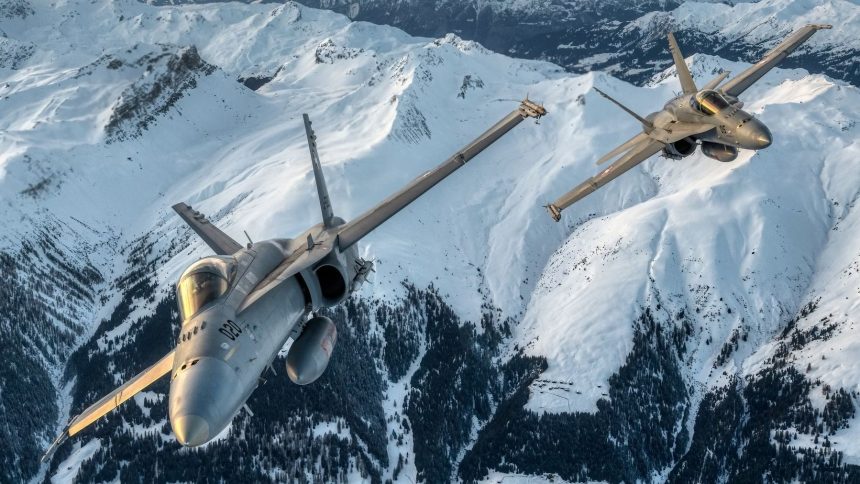The Swiss Air Force will move all F/A-18 squadrons to Emmen starting in 2027, while Meiringen and Payerne prepare for the eventual induction of the F-35A.
Relocation of the Hornet Fleet
On Feb. 18, 2025, the Swiss Government decided that they will be relocating all of their F/A-18C/D squadrons to Militärflugplatz Emmen, or Emmen Air Base, starting in 2027. This move is to prepare the two other air bases, Meiringen and Payerne, for the F-35s that will eventually be based there, and to prepare for the eventual retirement of the Hornets.
Emmen is most known as the home of the Patrouille Suisse, the Swiss Air Force’s aerobatics team equipped with F-5s. Besides the Patrouille Suisse, Emmen is home to the drone command, which uses the ADS 15 reconnaissance UAV system, and the Air Force Pilot School Command, which is equipped with PC-7s and PC-21s to train the nation’s future fighter pilots.
Notably, Emmen currently does not have any F/A-18 squadrons based there, unlike Meiringen and Payerne. Nonetheless, it is home to a maintenance facility run by the state owned RUAG, which does most of the maintenance for the fleet’s F/A-18s, and arresting gear facilities, meaning that it has the infrastructure required to support a more permanent F/A-18 presence.
The F/A-18s operated by the Swiss Air Force are slated to be retired in the early 2030s, to be replaced by the F-35As.
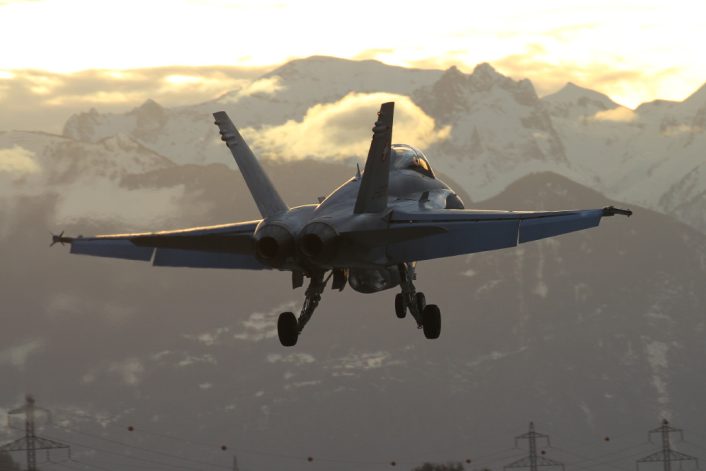
The Swiss F/A-18 Fleet
The main bases for Swiss F/A-18 operations are Payerne Air Base and Meiringen Air Base in western and central Switzerland, respectively. These bases offer strategic coverage of the Swiss airspace. The three Swiss F/A-18 squadrons are split between these bases, and as noted, Emmen Air Base, 40 km southwest of Meiringen in the Swiss center, is also involved in training and maintenance.
At Meiringen and Payerne Air Bases respectively, Fliegerstaffel 11 (Squadron 11) and Fliegerstaffel 17 (Squadron 17) operate the F/A-18C/D. Squadron 11, recognizable by its tiger insignia, is one of the most prestigious Swiss Air Force squadrons and frequently participates in exercises abroad. Squadron 17, recognizable by its falcon insignia, plays a vital role in national defense, ensuring airspace security and providing an interception capability in coordination with other military and civilian authorities.
The squadron operates in one of the most unique environments for fighter jets in Europe, as Meiringen is a mountain air base where aircraft take off and land in a narrow valley surrounded by steep mountains. The base itself is famous for possessing underground hangars, which are carved into the rock and provide additional shelter for the aircraft in times of war or inclement weather.
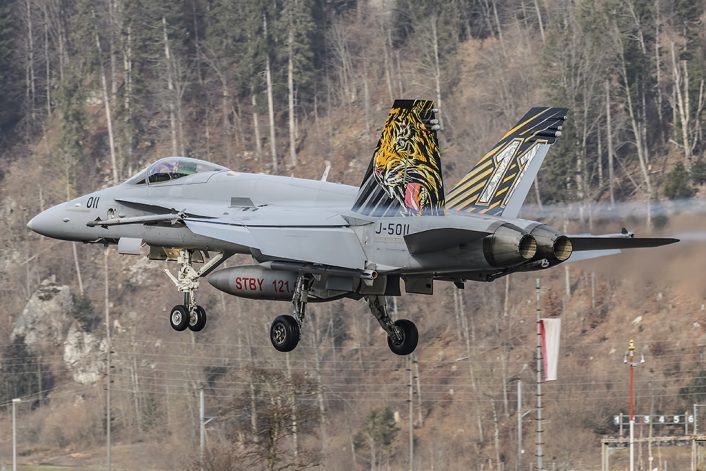
Payerne Air Base is home to Fliegerstaffel 18 (Squadron 18), whose emblem is a panther.
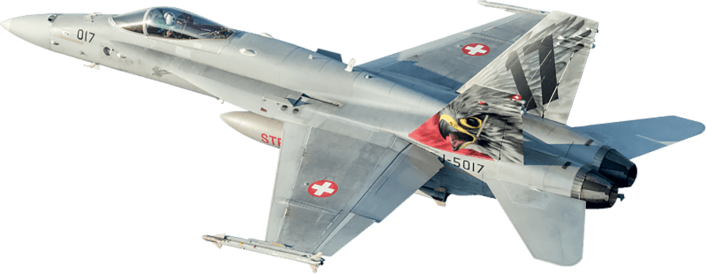
Despite the policy of neutrality in Switzerland, its air force maintains strict control of its airspace. Swiss jets were not always on standby at night, but after an incident in 2021, the country has been carrying out 24/7 Quick Reaction Alert operations. At least two fully armed F/A-18s are always on standby, ready to takeoff within minutes, offering round-the-clock national protection.
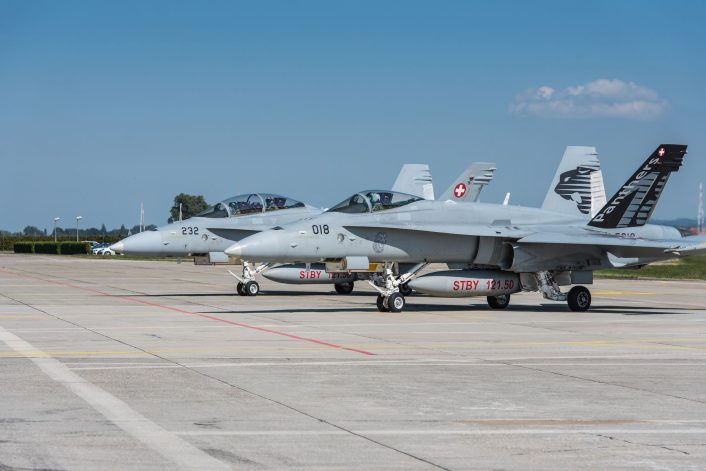
While the F-35A Lightning II has already been selected by the Swiss Air Force to replace the F/A-18s by 2030, in the meantime, the fleet of Hornets remains the backbone of the country’s air defense, carrying out essential patrol and interception duties daily.
The F-35A: the replacement for the Hornets
In 2021, Switzerland finalized the purchase of 36 Lockheed Martin F-35A Lightning II aircraft under the Air2030 program, whose aim was to decide the replacement for the F/A-18C/D Hornets and the remaining F-5E Tigers. The selection followed an in-depth assessment in which the F-35A ranked above the Eurofighter Typhoon, Dassault Rafale, and Boeing F/A-18 Super Hornet in terms of effectiveness, product support, and overall cost. At a total procurement cost of 6.035 billion CHF, the contract includes training, sustainment, and integration of the weapons.
The decision was based primarily on the F-35A‘s advanced stealth, sensor fusion, and first-rate ISR performance, which are core advantages in air defense today. The plane’s AN/APG-81 AESA radar, DAS (Distributed Aperture System), and modern electronic warfare system are significant improvements over that of the F/A-18s. The F-35A also scored highest for ‘total lifecycle cost’, having lower projected operating expenses than its competitors despite its initial procurement price.
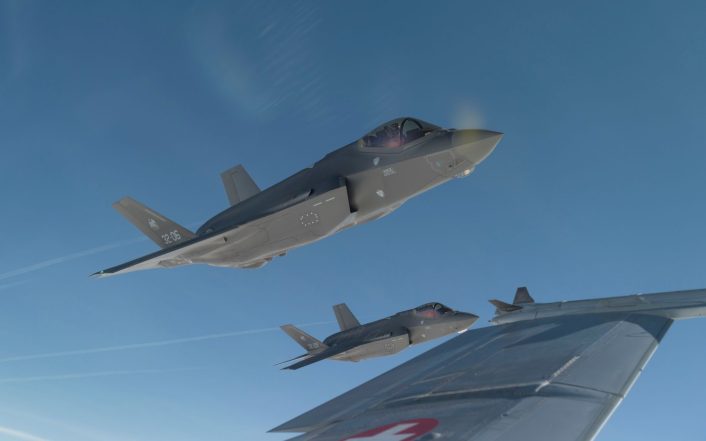
The aircraft’s interoperability with NATO and European air defense systems, despite Switzerland’s neutrality, is also a significant aspect of the choice, although both the Typhoon and Rafale share this advantage over the F/A-18E/F. The introduction of secure data links and multi-domain operating capability will bring a step change in situational awareness, particularly for QRA (Quick Reaction Alert) and national air defense operations.
The buy was politically contentious, with concerns of overdependence on the U.S. and disagreement over sovereign maintenance capabilities. However, in 2022, the purchase was approved by the public, and the deal proceeded.
With first deliveries anticipated in 2027 and full operational capability in 2030, the Swiss Air Force will retire its Hornets as it transitions Payerne and Meiringen squadrons to the F-35.

